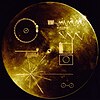Louis Armstrong and His Hot Seven
Louis Armstrong and his Hot Sevenwas ajazzstudio group organized to make a series of recordings forOkeh Recordsin Chicago, Illinois, in May 1927.[1]Some of the personnel also recorded withLouis Armstrong and His Hot Five,includingJohnny Dodds(clarinet),Lil Armstrong(piano), andJohnny St. Cyr(banjo and guitar). These musicians were augmented by Dodds's brother,Baby Dodds(drums),Pete Briggs(tuba), and John Thomas (trombone, replacing Armstrong's usual trombonist,Kid Ory,who was then touring withKing Oliver). Briggs and Thomas were at the time working with Armstrong's performing group, theSunset Stompers.
In five sessions between May 7 and May 14, 1927, the group recorded at least 12 sides, including "Willie the Weeper,""Wild Man Blues ","Twelfth Street Rag"and"Potato Head Blues"(celebrated forLouis Armstrong's stop-time solo and triumphant ride-out final chorus). Thomas Brothers cites "Wild Man Blues" as a "breathtaking breakthrough" for Armstrong's solo style because of its "effortless flow between melody, embellishment, fill-ins, and breaks."[2]
In these records, Armstrong continued and further developed his mastery of the jazz solo, almost completely dominating some of the numbers and further breaking down the New Orleans jazz style of collective improvisation into a vehicle for the soloist. In addition to his continued personal development, the Hot Seven sides feature Armstrong's new inclination towards worked-out and rehearsed arrangements, which can be heard in "Chicago Breakdown" and "Willie the Weeper."[3]
The Hot Seven song "Melancholy Blues" is included on theVoyager Golden Record,attached to theVoyagerspacecraft.[4]
See also
[edit]References
[edit]- ^Continuum Encyclopedia of Popular Music of the World Part 1 Media, Industry, Society.Bloomsbury Publishingp. 746. 2003.ISBN978-1-8471-4473-7.
- ^Brothers, Thomas (2014).Louis Armstrong: Master of Modernism.New York, NY: W.W. Norton & Company. p. 257.ISBN978-0-393-06582-4.
- ^Brothers, Thomas (2014).Louis Armstrong: Master of Modernism.New York, NY: W.W. Norton & Company. pp. 260–63.ISBN978-0-393-06582-4.
- ^Meier, Allison (September 29, 2016)."Reissuing the Voyager Golden Record, NASA's Quixotic Message to the Stars".Hyperallergic.RetrievedMarch 26,2019.
External links
[edit]

